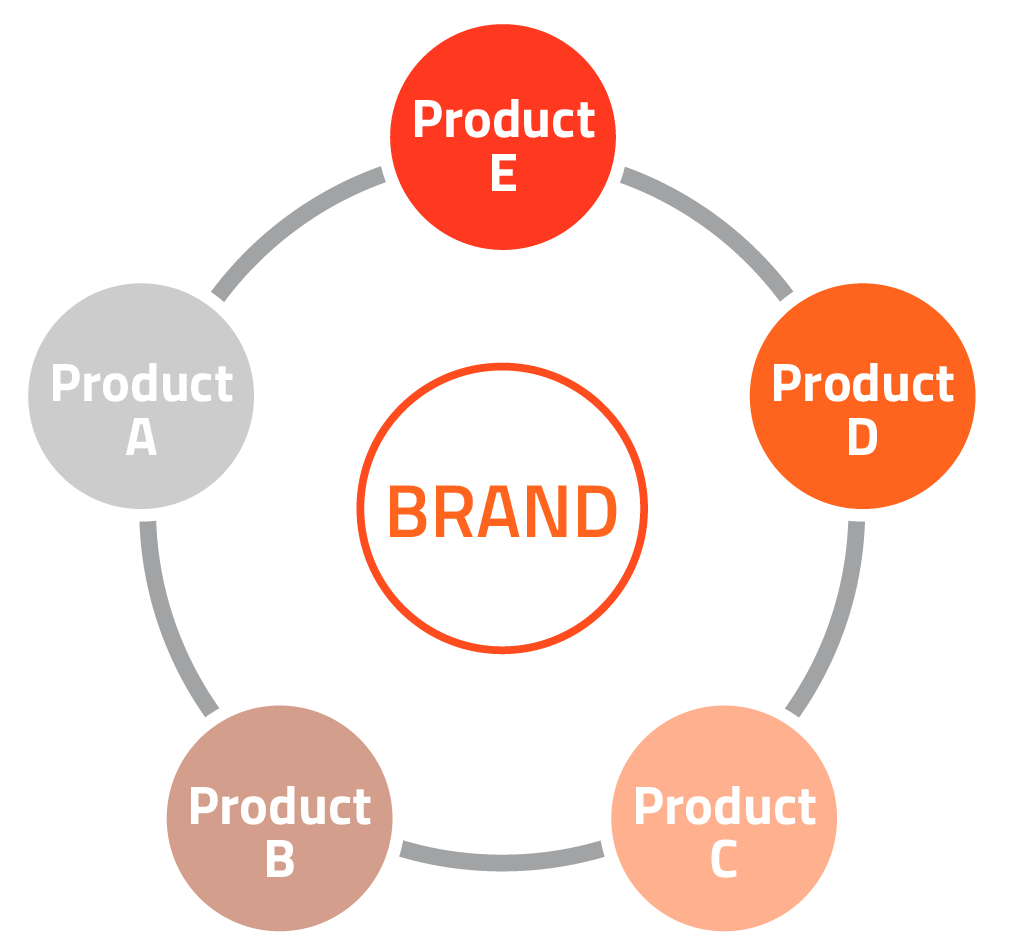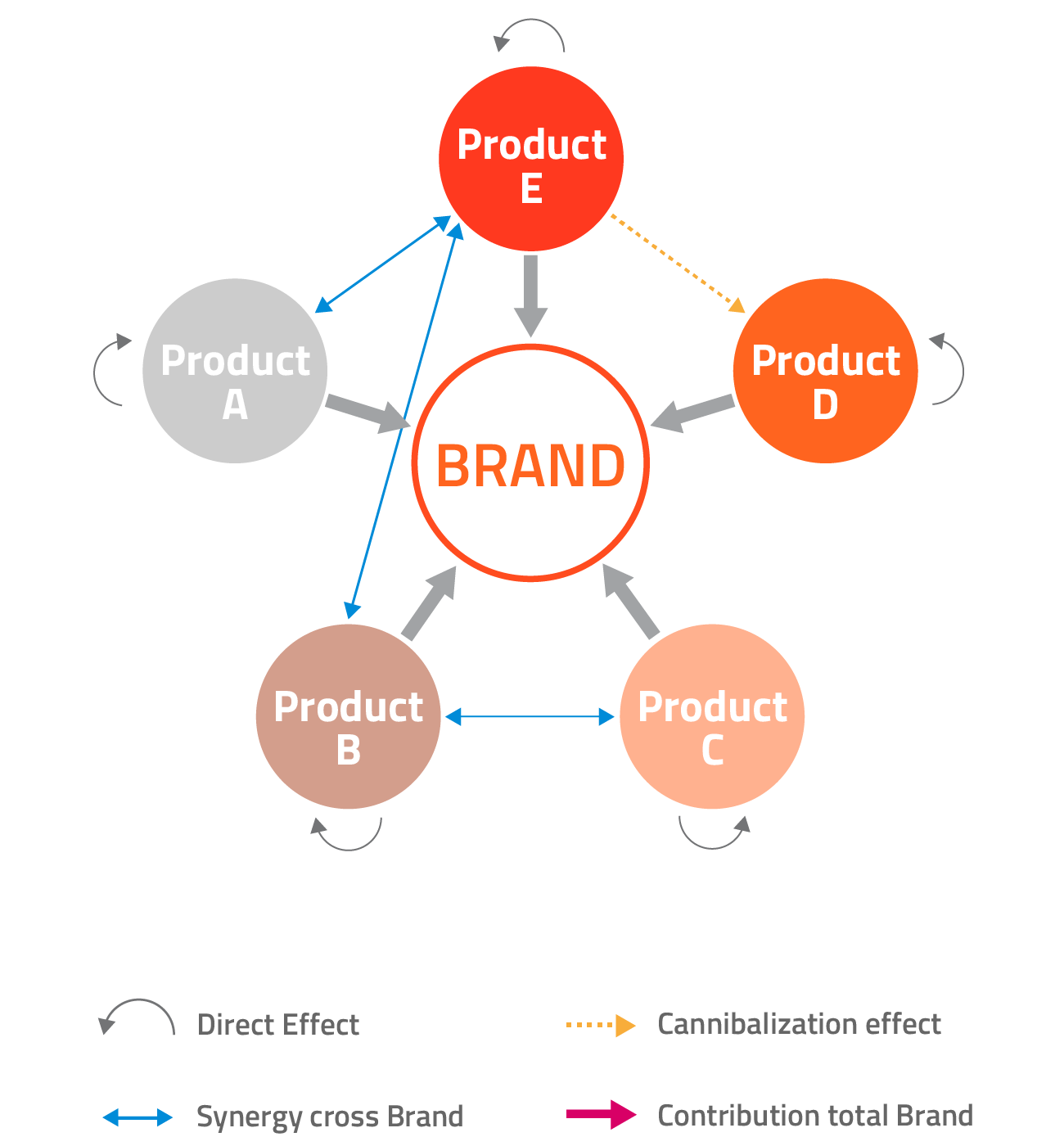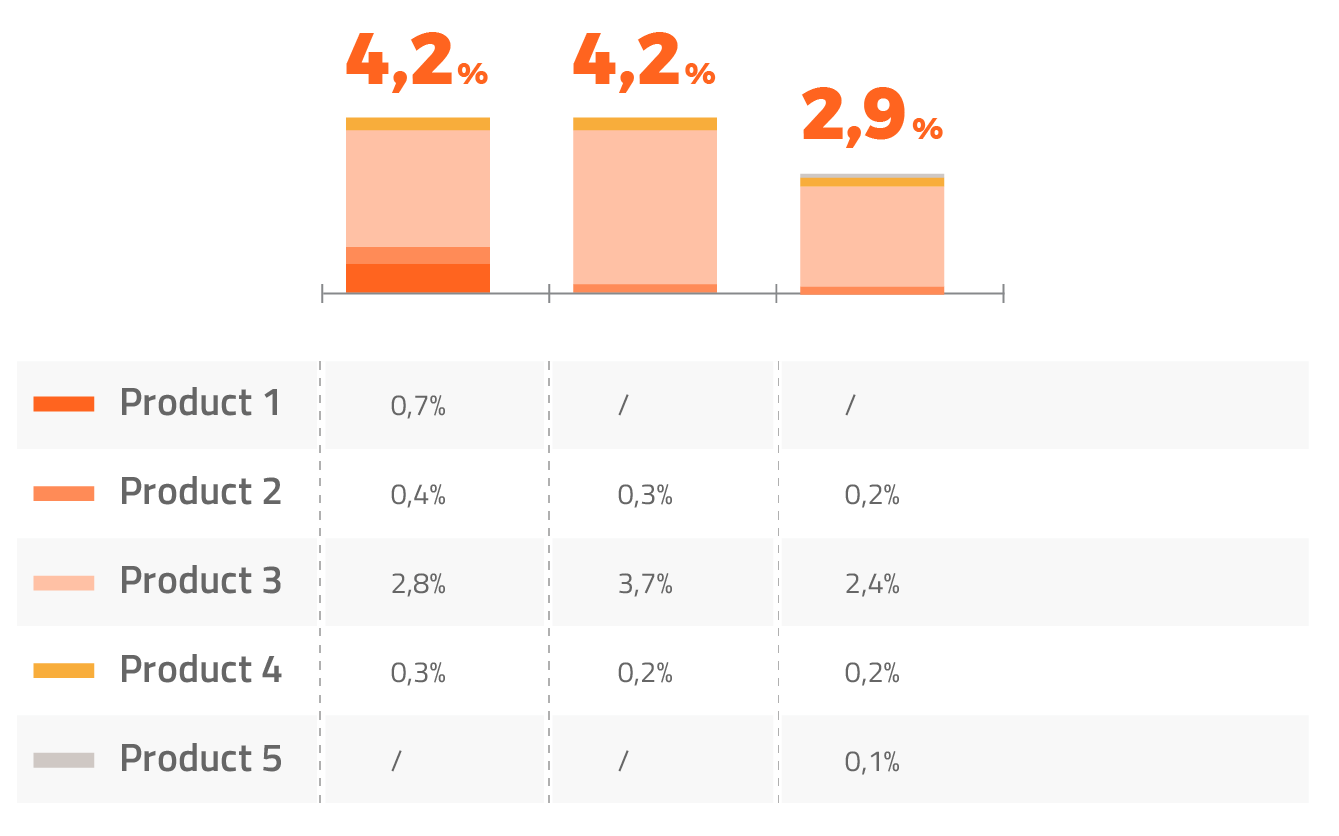Find the answers to these questions.
- How to best optimize resource allocation.
- What is the right marketing mix for different products?
- How much of the communication budget should be dedicated to innovation and how much to core business in order to optimize the brand’s overall ROI?
AREAS OF APPLICATION
Effective product management in brands with an ample range of offerings that meet a multitude of needs and consumer targets, is crucial to guarantee positive results over the short and long-term.
Understanding the dynamics within a product portfolio must be based upon sophisticated econometric models investigating all connections (both direct and cross-linked) that each marketing lever generates for each individual product and for the company’s entire product range.
Portfolio composition


AREAS OF APPLICATION
Effective product management in brands with an ample range of offerings that meet a multitude of needs and consumer targets, is crucial to guarantee positive results over the short and long-term.
Understanding the dynamics within a product portfolio must be based upon sophisticated econometric models investigating all connections (both direct and cross-linked) that each marketing lever generates for each individual product and for the company’s entire product range.
PORTFOLIOMODELING A TOOL FOR OPTIMIZING PRODUCT PORTFOLIO COMPOSITION AND ASSORTMENT, AND FOR DETERMINING THE BEST USE OF PROMOTIONAL AND COMMUNICATION LEVERS.
Methodology
This tool tests all possible synergies and, when deemed statistically significant, calculates the impact coefficients and their contribution to business.
For advertising, the following parameters are evaluated:
- direct impact of a campaign on the specific product that’s being pushed;
- spillover, impact on other items that benefit from the advertisement owing to brand affinity or usage.
- possible effects of cannibalization caused by the partial overlapping of targets or interchangeability of products
- net result on the whole brand (taking into account all direct and spillover effects)
The above mentioned relationships are evaluated across all levers of the marketing mix, in particular:
- Distribution: what happens if one distribution point is added for Product A and how much will this cannibalize product D?
- Price: what impact will a different positioning of item B have on item C?
- Promotions: what effect does an increased promotional push of A have on E?
Mktg mix effects (es. ADV)


The above mentioned relationships are evaluated across all levers of the marketing mix, in particular:
- Distribution: what happens if one distribution point is added for Product A and how much will this cannibalize product D?
- Price: what impact will a different positioning of item B have on item C?
- Promotions: what effect does an increased promotional push of A have on E?
OUTPUT: INSIGHT ON ASSORTMENT
The analysis and econometric modeling of the direct and spillover effects on product portfolios provides the following insights:
- coefficients of elasticity of the main levers of the marketing mix (ADV, price, promo, distribution);
- impact on sales of single products
- overall impact on the entire brand
The model can also integrate information acquired from a company’s surveys (including U&A, brand awareness, consumer panels) to better explain the brand’s market dynamics.
Tv advertising contributing
% on Total Brand Volume


OUTPUT: INSIGHT ON ASSORTMENT
The analysis and econometric modeling of the direct and spillover effects on product portfolios provides the following insights:
- coefficients of elasticity of the main levers of the marketing mix (ADV, price, promo, distribution);
- impact on sales of single products
- overall impact on the entire brand
The model can also integrate information acquired from a company’s surveys (including U&A, brand awareness, consumer panels) to better explain the brand’s market dynamics.
BENEFITS: AN INTEGRATED ANALYTIC SYSTEM TO ACQUIRE A DEEP UNDERSTANDING OF THE EFFECTS OF COMMUNICATION ACTIVITIES ON A COMPANY’S PRODUCT MIX AND FIND THE IDEAL BALANCE BETWEEN RESOURCES AND ASSORTMENT.
